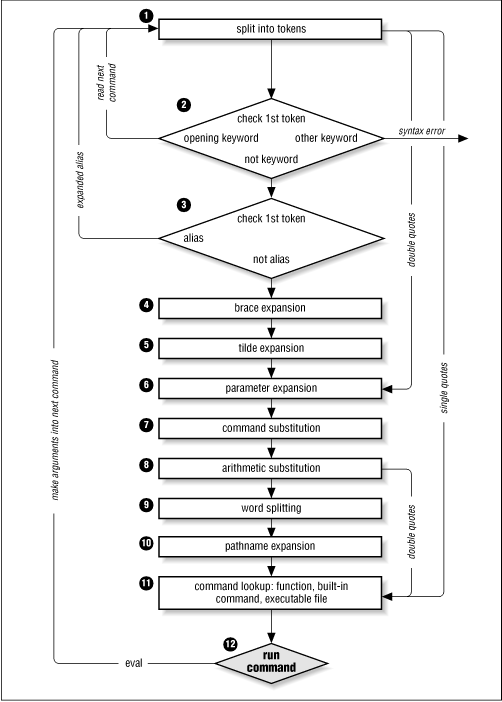Command-Line Processing
We’ve seen how the shell uses read to process input lines: it deals with single quotes (''), double quotes (“”), and backslashes (\); it separates lines into words, according to delimiters in the environment variable IFS; and it assigns the words to shell variables. We can think of this process as a subset of the things the shell does when processing command lines.
We’ve touched upon command-line processing throughout this book; now is a good time to make the whole thing explicit. Each line that the shell reads from the standard input or a script is called a pipeline; it contains one or more commands separated by zero or more pipe characters (|). For each pipeline it reads, the shell breaks it up into commands, sets up the I/O for the pipeline, then does the following for each command (Figure 7.1):

Figure 7-1. Steps in command-line processing
Splits the command into tokens that are separated by the fixed set of metacharacters: SPACE, TAB, NEWLINE, ;, (, ), <, >, |, and &. Types of tokens include words, keywords, I/O redirectors, and semicolons.
Checks the first token of each command to see if it is a keyword with no quotes or backslashes. If it’s an opening keyword, such as if and other control-structure openers, function, {, or (, then the command is actually a compound command. The shell sets things up internally for the compound command, reads the next command, ...
Get Learning the bash Shell, Second Edition now with the O’Reilly learning platform.
O’Reilly members experience books, live events, courses curated by job role, and more from O’Reilly and nearly 200 top publishers.

